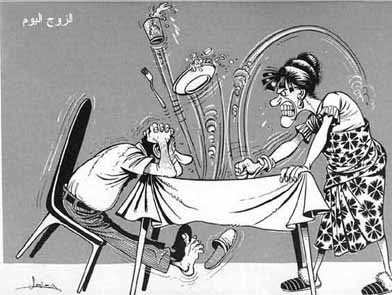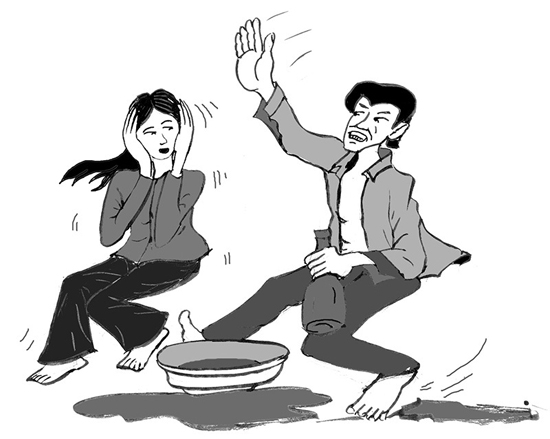The Law on Domestic Violence Prevention and Control 2007 of Vietnam consists of 6 chapters and 46 articles.
Chapter I: General provisions
This chapter deals with the scope of regulation; domestic violence acts; principles of domestic violence prevention and control; obligations of persons committing domestic violence; rights and obligations of domestic violence victims; State policies on domestic violence prevention and control; international cooperation in domestic violence prevention and control; acts strictly forbidden.
The principles of domestic violence prevention and control are primarily based on preventive measures, combined with timely protection of the lives and health of victims to prevent serious consequences, aiming to build and strengthen Vietnamese families.
Domestic violence acts are listed in Article 2, consisting of 9 acts of 4 groups, which are physical, psychological, sexual, and economic violence. The above-mentioned list may be incomplete, but it has partially addressed the issue of comprehensive legal framework. However, regarding the criteria for determining what constitutes domestic violence, the implementing guidelines will need to provide more detailed explanations.
Acts strictly forbidden specified in Article 8 include acts of perpetrating violence, inciting violence, and obstructing the prevention and handling of domestic violence. Such provisions aim to address situations where some individuals who have reported incidents of violence to authorities are dismissed or delayed in receiving appropriate action due to officials considering it a family matter.
Chapter II: Prevention of domestic violence
This Chapter reflects the importance of preventing domestic violence and emphasizes community-based solutions, leveraging the roles of families and lineages. It stipulates the early detection and resolution of minor conflicts and disputes to prevent them from escalating into major conflicts that may result in domestic violence. Handling minor disputes and conflicts through grassroots reconciliation measures etc.
Another notable provision in this Chapter is the community-oriented measure of "Comments and criticism of communities on domestic violence prevention" towards individuals exhibiting violent behavior (without reaching the level that requires educational measures at the commune or ward level), aimed at preventing the continuation of violent acts. This measure has been effectively implemented in some rural areas and has gained widespread support from the majority of the population.

Chapter III: Protecting and assisting victims of domestic violence
This Chapter regulates: discovering and reporting domestic violence acts; prevention and protection measures; contact forbidden upon decision of the Chairperson of the commune People’s Committee and the Court; taking care of domestic violence victim at health stations; counseling for domestic violence victims; emergency support of essential provisions; domestic violence victim support facilities (health stations; Social Protection and Assisting Centers; domestic violence victim supporting centers; counseling centers for prevention and control of domestic violence; reliable addresses in community).
Chapter III provides regulations on specific measures for supporting and protecting victims, including:
The measure of prohibiting contact between the perpetrator of domestic violence and the victim is specified in Chapter III, with certain specific conditions, including the requirement for the isolation of the domestic violence victim. The authority to issue the prohibition order is as follows:
- The Chairman of the People's Committee at the commune level has the power to decide on a contact ban for a period not exceeding 3 days (Article 20).
- In certain cases where the court is handling or resolving a civil case between the perpetrator of domestic violence and the victim, the court has the authority to issue a decision to apply a contact ban based on the victim's request and other specified conditions (Article 21).
In reality, some cases of domestic violence have severe consequences that pose a threat to the victim's life. Without the measure of prohibiting contact and isolating the parties involved, there is a risk that the situation may escalate into criminal acts, even potentially leading to homicide. Therefore, the contact ban is one solution to protect the victim, minimize the consequences of domestic violence, and reduce criminal offenses. However, due to the restrictive conditions for issuing a contact ban, only a few domestic violence cases have applied this measure. Moreover, the Law also clearly stipulates the supervision of the implementation of this measure (Article 22).
The provision of healthcare for victims at medical facilities is clearly stipulated in the law. The Health Insurance Fund will cover the costs of medical examination and treatment for victims of domestic violence who have health insurance, while other individuals will follow the regulations on medical fees according to the law. As for compensation for damages, it is implemented according to the provisions of civil law, so it is not necessary to include it in this Law.
The assistance facilities for victims include the following types: healthcare facilities responsible for receiving and providing health care and creating temporary shelters (not exceeding 1 day); state social protection facilities; and support facilities for domestic violence victims (NGOs, private entities) that are registered and authorized to provide counseling and support activities for victims. One of the community-based support facilities for domestic violence victims is the trusted address (any individual or organization that wishes to be a trusted address only needs to inform the People's Committee at the commune level where the address is located). These trusted addresses are individuals or organizations with credibility, capability, and voluntary willingness to help domestic violence victims in the community. This is a new and specific feature based on the cultural conditions of Vietnam, and it is regulated based on the successful experience of the pilot model for preventing and combating domestic violence in Thai Binh province (Article 30).
Chapter IV: Responsibilities of individuals, families, institutions/organizations in prevention and control of domestic violence
This Chapter regulates the responsibility of individuals, families; responsibility of the Vietnam Fatherland Front Committee and its member organizations; responsibility of the Vietnam‘s Women Union; state management agency on domestic violence prevention and control; responsibility of the Ministry of Culture, Sports and Tourism; responsibility of the Ministry of Health; responsibility of the Ministry of Labor, War Invalids and Social Affairs; responsibility of the Ministry of Education and Training; responsibility of the Ministry of Information and Communication and mass media agencies; responsibility of the police, courts and investigating bodies.
There are 3 prominent issues in this chapter:
- Specific regulations on the responsibility of the Ministry of Culture, Sports, and Tourism to assist the Government in implementing state management of domestic violence prevention and control.
- The responsibilities of relevant ministries and sectors regarding this issue are clarified, particularly the roles of the Vietnam Women's Union and the Ministry of Health etc.
- The People's Committee at the commune level must annually report to the People's Council at the same level on the situation and results of domestic violence prevention and control in the locality. The regulation limits the annual reporting at the commune level because this is where the situation of domestic violence is best understood and where timely interventions can be made. It is also a place that embodies the cultural characteristics of Vietnamese communities, kinship, and villages. Therefore, promoting activities at the commune level in preventing and combating domestic violence will effectively strengthen Vietnamese families. Reporting on the situation of domestic violence to the People's Council at different levels or to the National Assembly follows the same procedures as other issues under state management, which are currently implemented by the People's Committees at various levels and the Government.
Chapter V: Dealing with the breach of the law on domestic violence prevention and control and law on complaints and denouncements
This Chapter specifies that officials, public employees and persons in the people’s armed forces committing domestic violence and supposedly being charged for civil violations shall be reported to the Heads of their institutions for education.
Chapter VI: Enforcement and implementation
The Law on Domestic Violence Prevention and Control 2007 of Vietnam comes into force from July 01, 2008.
Source: Bao dien tu Dai bieu nhan dan
 Article table of contents
Article table of contents






.jpg)



.Medium.png)
.Medium.png)
.Medium.png)
.Medium.png)
